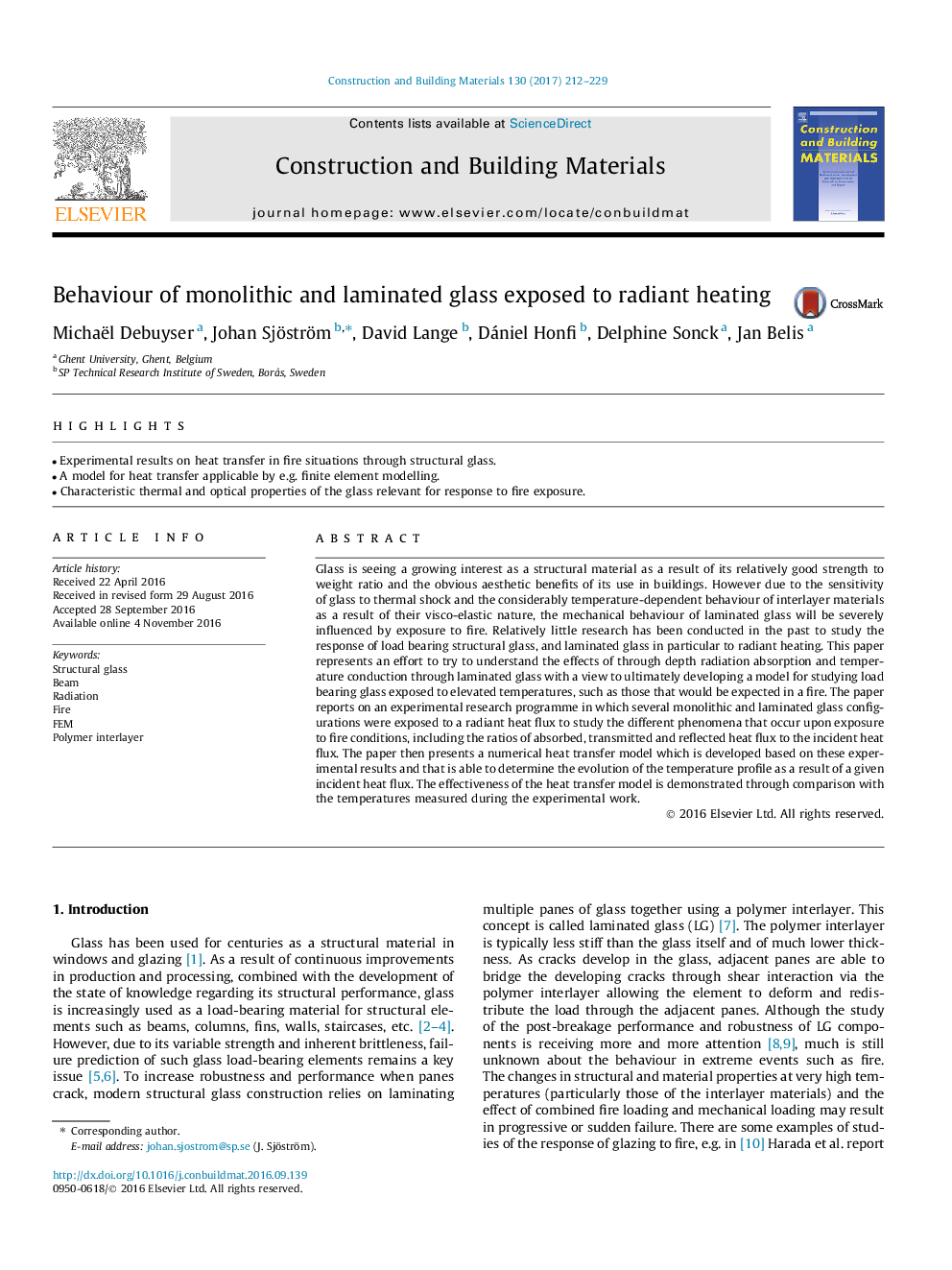| Article ID | Journal | Published Year | Pages | File Type |
|---|---|---|---|---|
| 4913882 | Construction and Building Materials | 2017 | 18 Pages |
Abstract
Glass is seeing a growing interest as a structural material as a result of its relatively good strength to weight ratio and the obvious aesthetic benefits of its use in buildings. However due to the sensitivity of glass to thermal shock and the considerably temperature-dependent behaviour of interlayer materials as a result of their visco-elastic nature, the mechanical behaviour of laminated glass will be severely influenced by exposure to fire. Relatively little research has been conducted in the past to study the response of load bearing structural glass, and laminated glass in particular to radiant heating. This paper represents an effort to try to understand the effects of through depth radiation absorption and temperature conduction through laminated glass with a view to ultimately developing a model for studying load bearing glass exposed to elevated temperatures, such as those that would be expected in a fire. The paper reports on an experimental research programme in which several monolithic and laminated glass configurations were exposed to a radiant heat flux to study the different phenomena that occur upon exposure to fire conditions, including the ratios of absorbed, transmitted and reflected heat flux to the incident heat flux. The paper then presents a numerical heat transfer model which is developed based on these experimental results and that is able to determine the evolution of the temperature profile as a result of a given incident heat flux. The effectiveness of the heat transfer model is demonstrated through comparison with the temperatures measured during the experimental work.
Keywords
Related Topics
Physical Sciences and Engineering
Engineering
Civil and Structural Engineering
Authors
Michaël Debuyser, Johan Sjöström, David Lange, Dániel Honfi, Delphine Sonck, Jan Belis,
